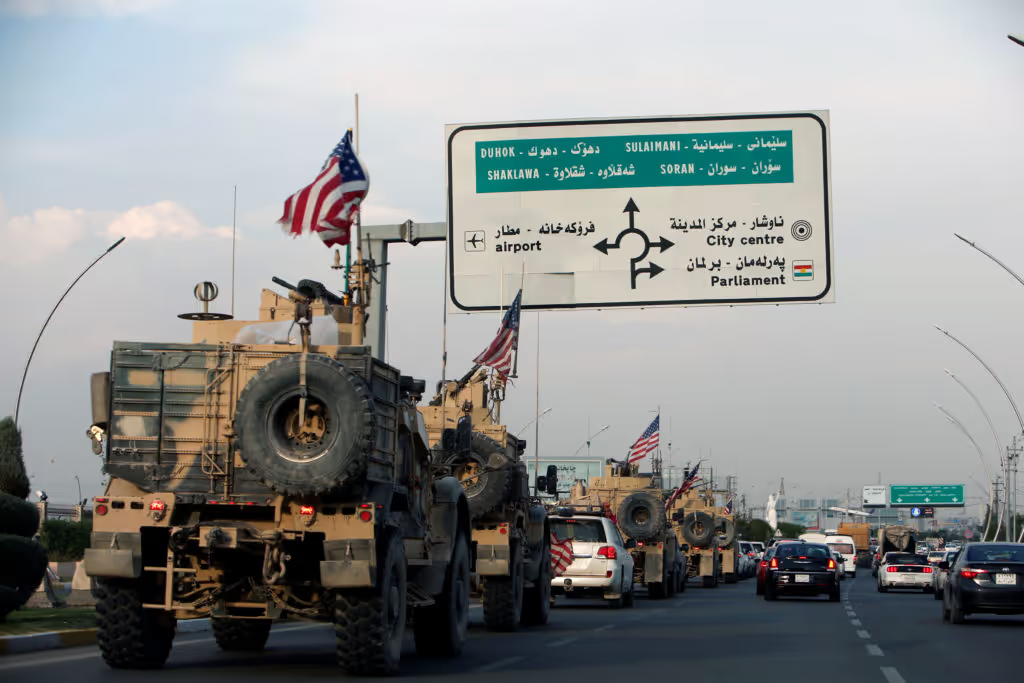
Recent reports suggest that the United States is considering the withdrawal of its troops from Syria, where currently 900 soldiers are stationed. Some officials within the Biden administration are worried that this could jeopardize the fight against ISIS. They are concerned that the US’s local ally in Syria, the Kurdish-led Syrian Democratic Forces (SDF) will no longer be able to keep 10.000 ISIS fighters and their 50.000 family members in detention camps. To empower the SDF and to contain ISIS, the US plans to engage the al-Assad government and has already asked for the input of the Erdoğan administration about the deliberations. Nonetheless, the U.S. should also consider the broader implications of such a withdrawal, such as Turkish incursions into northern Syria or an armed conflict between Damascus and the SDF in the eastern Euphrates.
Discussions regarding the U.S. troops in Syria are closely linked to unfolding events in Iraq. The U.S. and Iraq will start the Higher Military Commission dialogue, marking a significant step toward establishing a timetable for the withdrawal of the U.S. forces from Iraq. Iran and its proxies in Iraq have persistently called for this departure, resorting to harassment tactics against them in both Iraq and Syria. Since the conflict in Gaza erupted on October 7th, Iran-aligned local militias have significantly escalated their attacks on the U.S. troops in both countries, resulting in over 150 reported incidents to date. Initially adopting a restrained stance, the U.S. has recently chosen to assert itself. This shift was manifested in a drone strike targeting Hajj Mushtaq Talib al-Saidi, a senior commander of the Popular Mobilization Forces, earlier this month. The U.S. retaliatory actions prompted a reaction from Iraqi Prime Minister Al-Sudani, who called for an end to the presence of U.S. troops in the country.
These developments in Iraq have repercussions for the U.S. forces in Syria. Since the supply routes for these forces primarily run through Iraq, the absence of reliable logistics and support from nearby bases could leave the troops in Syria exposed. Given Turkey's consistent expression of discontent over the presence of U.S. troops in Syria, Turkey is not a reliable alternative. The most prudent approach appears to be a withdrawal from Syria, coupled with the establishment of a functional arrangement for local partners, particularly the Syrian Democratic Forces (SDF). While the U.S. is exploring scenarios where the SDF collaborates with al-Assad against ISIS, there is also an apparent effort to seek reassurances from Turkey that the SDF's position in the east Euphrates will not be undermined.
Although no final decision has been reached yet, reports suggest that this matter is under discussion at high levels within the U.S. government. The primary concern for U.S. officials, as mentioned above, is that a withdrawal from Syria could potentially lead to the resurgence of ISIS, a legitimate and serious worry. In addition to that, such a withdrawal is also likely to ignite further conflict between Turkey and the SDF. Turkey views the YPG, the armed wing of the SDF, as an extension of the PKK, which is designated a terrorist organization by both Ankara and Washington. Turkey's strategic objective involves establishing a 30 km deep buffer zone along its southern border inside Syria and Iraq. Turkey has achieved partial success in implementing this policy, yet its plans to remove the SDF from its southern border were thwarted by the intervention of the U.S. and Russia.
The presence of U.S. troops during Turkish raids has been a deterrent, preventing Turkey from expanding the scope of its military operations in Syria. For example, during drone strikes against the SDF in Syria in October 2023, a Turkish drone was shot down due to perceived threats to the nearby U.S. troops. In the absence of such risks, Turkey's future retaliation to PKK attacks could manifest as invasions of parts of northern Syria, as Ankara does not make a clear distinction between the PKK and the YPG. The likelihood of a fatal skirmish between Turkey and the PKK is not a matter of if, but when.
On the other hand, the presence of U.S. forces on the ground acts as a deterrent against al-Assad's military and its Iranian and Russian allies too, preventing them from advancing east of the Euphrates. With the withdrawal of the U.S. military from the region, there is a risk of a power vacuum that they might exploit. In such a situation, there's a heightened probability that the Syrian Democratic Forces may struggle to sustain a prolonged military campaign against these combined forces. This could potentially prompt Turkey to intervene, aiming to prevent eastern Syria from falling under the full control of al-Assad.
While its timing is uncertain yet, it is almost certain that U.S. troops’ withdrawal from Syria will not follow the rushed pattern witnessed in Afghanistan. The process is expected to unfold gradually over time, but the writing is on the wall. Once U.S. troops exit, concerns arise about a potential vacuum in eastern Syria. The Turkish military is poised to seize opportunities, expanding its sphere of influence by engaging the SDF in deeper regions. This potential power vacuum also raises the specter of reigniting the once-calmed civil war in Syria, particularly in the eastern theater, with the possible intervention of the Assad regime and its foreign supporters. The U.S. presidential election this year adds a complicating factor. President Biden will work to provide assurances to local allies to prevent their collapse. In the event of a Trump victory in the elections, Erdoğan might find a more receptive ear in Washington, D.C., to bolster Turkey's arguments.